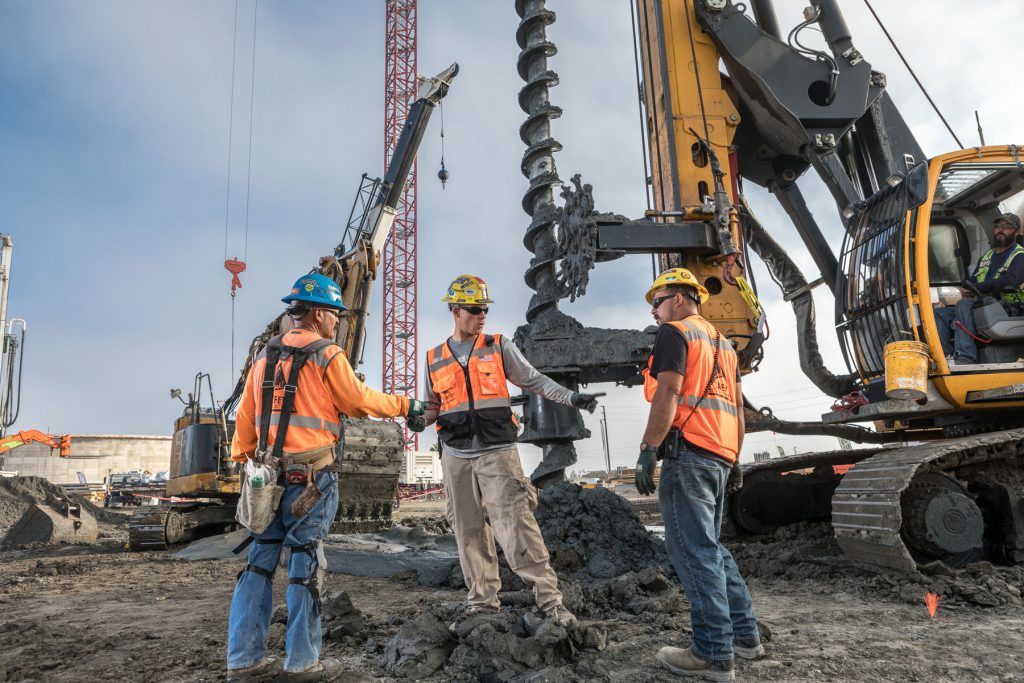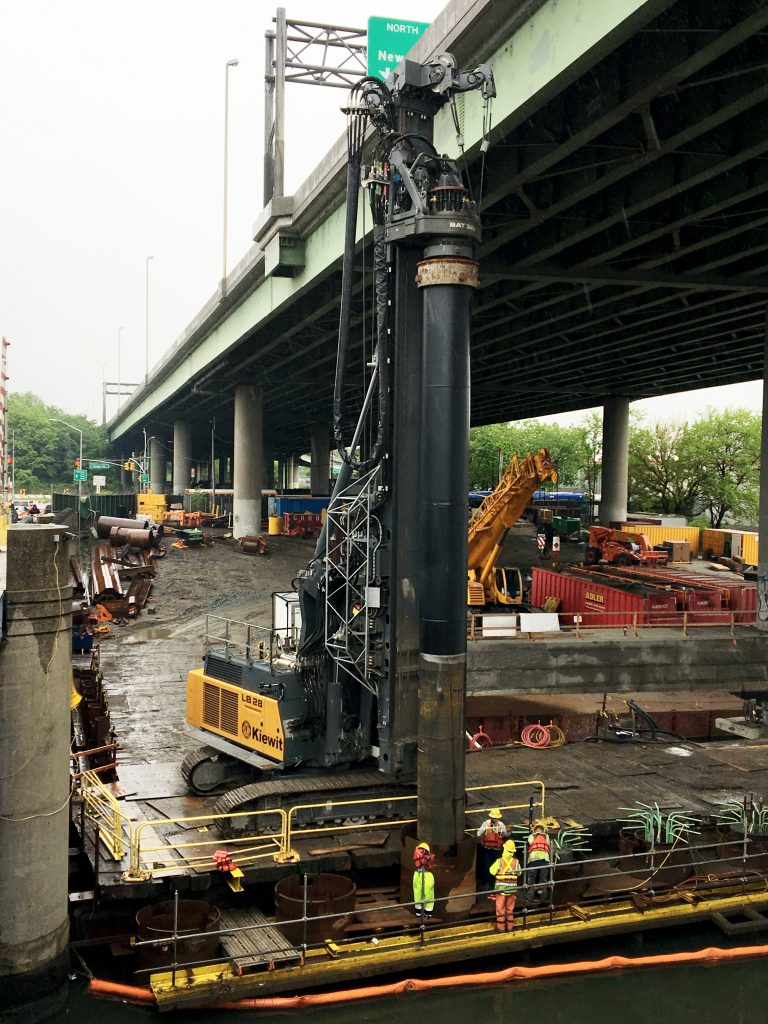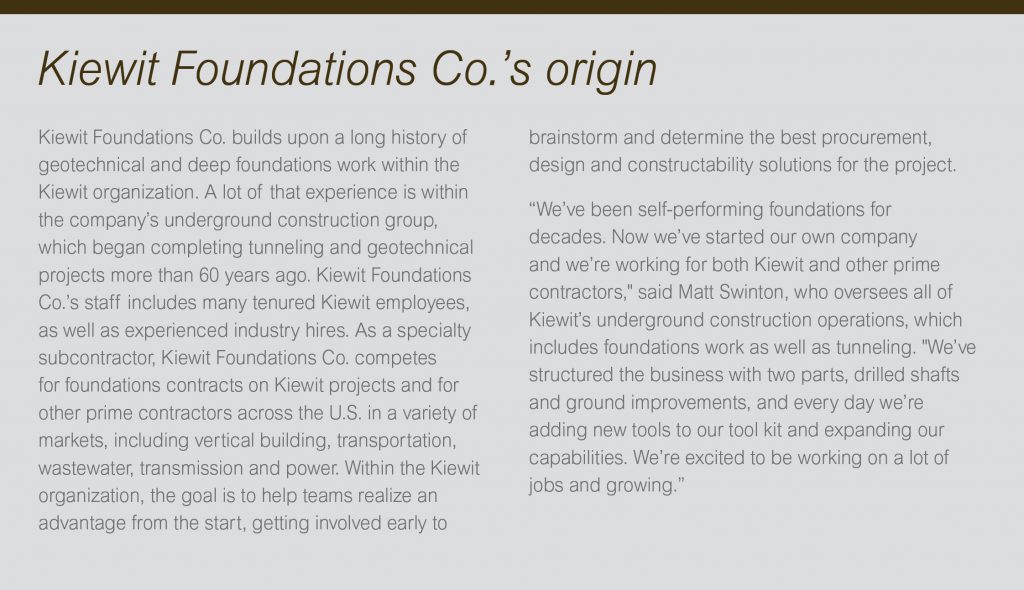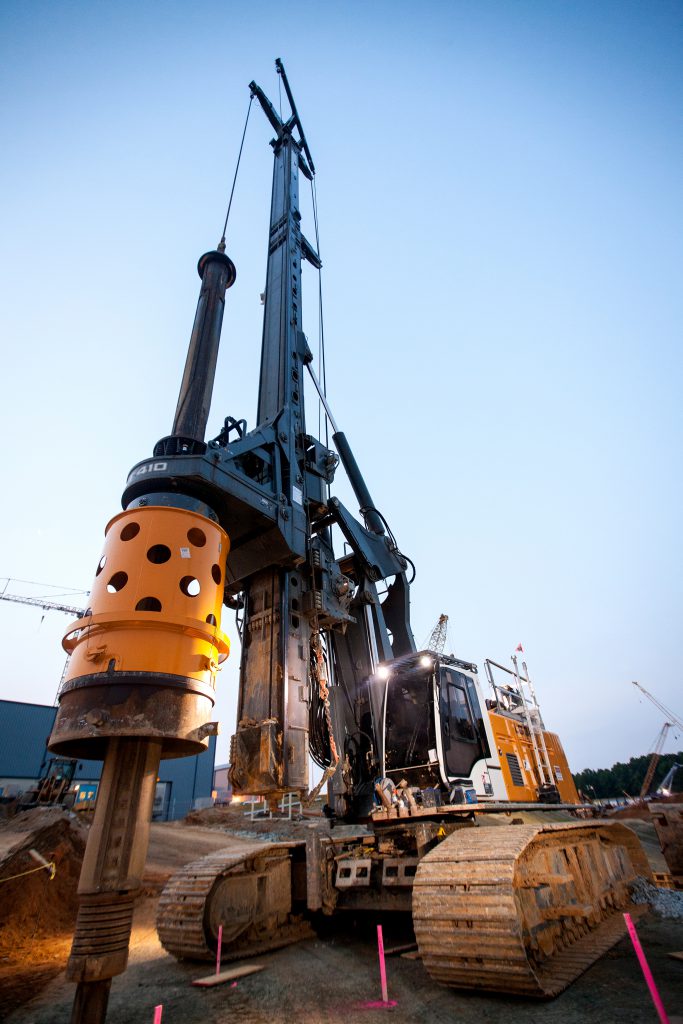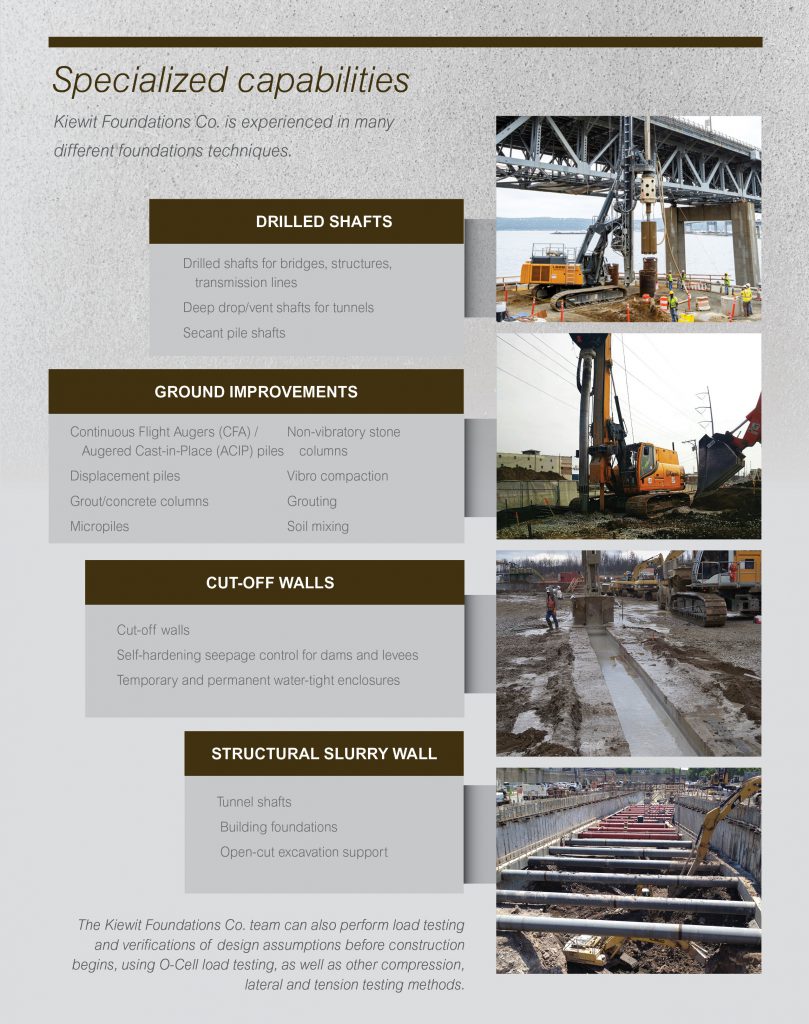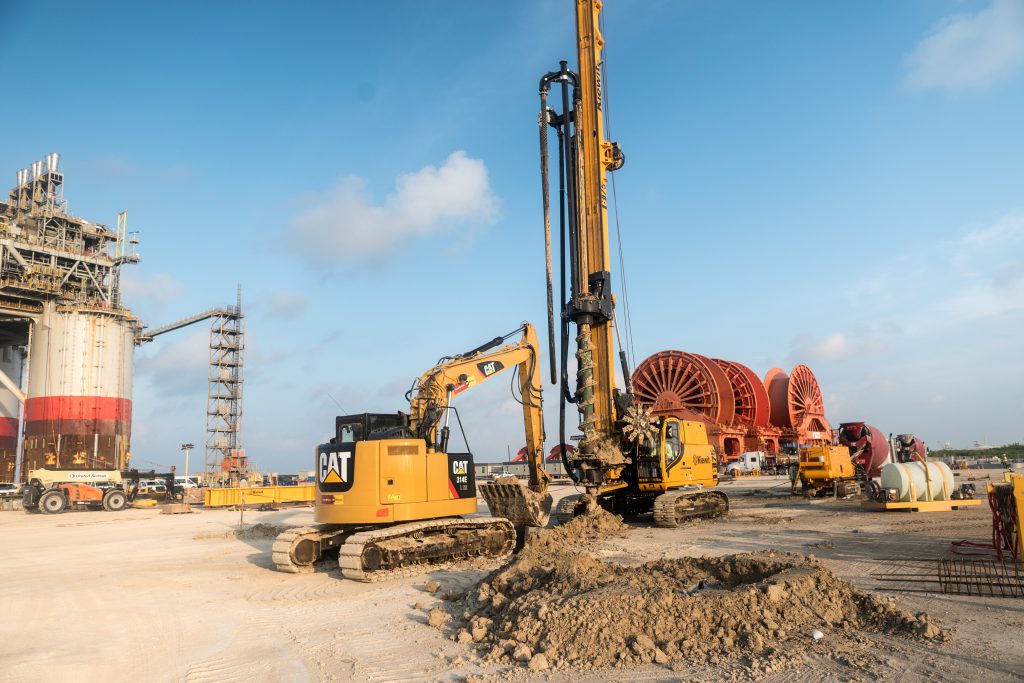Kiewit Foundations Co. specializes in constructing the parts of a project you’ll often never see
When asked to describe what he does for a living in the most basic terms possible, Kiewit Foundations Co. Sponsor Mike Berry doesn’t disappoint.
“I dig holes in the ground and fill them up. And that provides the base of everything else that’s built.”
As simple as it sounds, it’s a distillation that helps those unfamiliar with Berry’s work begin to understand it, especially since most of what Kiewit Foundations Co. does is never seen once all construction is complete.
“The things you put in the ground that are exposed are few and far between. I’ve had jobs I spent eight months on and put 10,000 cubic yards of concrete into it, and the job looked the same way the day I got there as the day I left,” Berry said.
Out of sight and behind the elementary explanation is work that’s dependent on intense technical details, includes a variety of methods and techniques, and requires an advanced and versatile equipment fleet.
Attention to data
Kiewit Foundations Co. segments its business into two types of work: drilled shafts and ground improvements. The drilled shafts team focuses on, of course, drilled shafts, as well as cut off and slurry walls. The ground improvements team performs operations that improve the soil that’s already there to reduce settlement and increase bearing capacity, ground strength and liquefaction resistance.
Each requires gathering and analyzing the right technical data to understand what’s beneath the project’s feet.
“You need a detailed understanding of the geology,” said Kiewit Foundations Co. manager Scott Wimmer. “Rock characteristics, soil types, groundwater tables and other geotechnical data help us determine the best solutions and proper equipment and tooling selection.”
It’s not just the type of data that is important for making decisions. The quantity of data points collected is critical, too.
“We need to have the right number of data points to understand what’s there, what’s in the ground and how it will behave,” said Berry, who manages the drilled shafts side of Kiewit Foundations Co. “If we’re working in an area that’s 10 square feet, we only need a few data points. An area the size of a football field might require 100.”
What’s the solution?
After analyzing the data, Kiewit Foundations Co. determines the right methods and equipment to get the job done.
“No one technique, solution, drill or tool is right for every project,” Wimmer said. “It’s critical that we thoroughly analyze and select the correct techniques, equipment and tooling during the estimate phase. We’re always challenging ourselves to find a safer, cheaper and faster solution that meets all the design requirements. As an example, if it meets design parameters, CFA auger cast piles have proven to be cheaper and faster than drilled shafts, and in some cases driven pile.”
Increasingly, new industry techniques are taking shape that are more efficient and cost-effective. For instance, Kiewit Foundations Co. is the first contractor in North America to complete non-vibratory stone columns. Mark Ahrens manages Kiewit Foundations Co.’s ground improvements work and has more than 23 years of industry experience.
“This is very new to the industry. It originated in New Zealand and has been used in Europe for about the past seven years,” said Ahrens. “When you get around sensitive utilities or existing buildings you don’t have to worry about vibration with this technique. Traditional stone column techniques create vibration where this doesn’t.”
Another major benefit of non-vibratory stone columns is they don’t generate drill spoils, which is cost-effective, especially on sites that may have contaminated soils.
Having the right equipment for every construction technique, old or new, is key.
“A lot of thought goes into what kind of tooling we need and the rig we want to use,” Ahrens said.
Staying on the critical path
With a plan in place and specialized equipment in tow, Kiewit Foundations Co. is onsite at the onset of construction. Foundations and ground improvements are the precursor for all of the rest of the work. If this scope isn’t planned and executed well, it can disrupt the entire project schedule and its critical path.
To keep projects on time and on budget from the get-go, general contractors need foundations experts on the job who can not only develop a plan based on technical data collected and analyzed in advance, but who can adapt and modify that plan based on the conditions actually encountered once construction begins.
“When you work in the ground, even with as much data as you’ve been given and all of the borings and everything else, there are still a lot of unknowns,” said Berry. “Having the people who have the knowledge to make changes in the field regarding the way we’re approaching a project — or to know what to do when the ground gives you something that you didn’t expect — is key to keeping the work moving forward safely and efficiently.”
Berry explains that Kiewit Foundations Co. has a natural advantage when the unexpected happens because it doesn’t just specialize in one technique. The team has experience in a wide array of geotechnical construction methods and a $9 billion parent company with more than 130 years of construction experience to back it up.
“Because we’ve got a bunch of different techniques we look after and a bunch of different people with different knowledge bases, we’re not thrown when something changes. We’re very quick to adapt and overcome.”
Getting out of the ground
Once foundations and ground improvements are complete, above-ground work can begin. Out in the open with increased visibility, things theoretically get a little easier on construction crews.
“Once you get out of the ground, everything is in front of your face. There are very few unknowns left,” Berry said. “The project is in your control and you have more ability to influence it.”
Similar to how he describes what he does for a living, Berry has a pretty simple explanation for Kiewit Foundations Co.’s role in getting Kiewit and other prime contractors to this point in their projects.
“It’s important to have a contractor or a part of your business that can make sure you get out of the ground in the quickest and most efficient manner possible.”
